My Transformative Journey: Graduating from the AWS AI/ML NanoDegree Program and Building Real-World AI Projects🚀
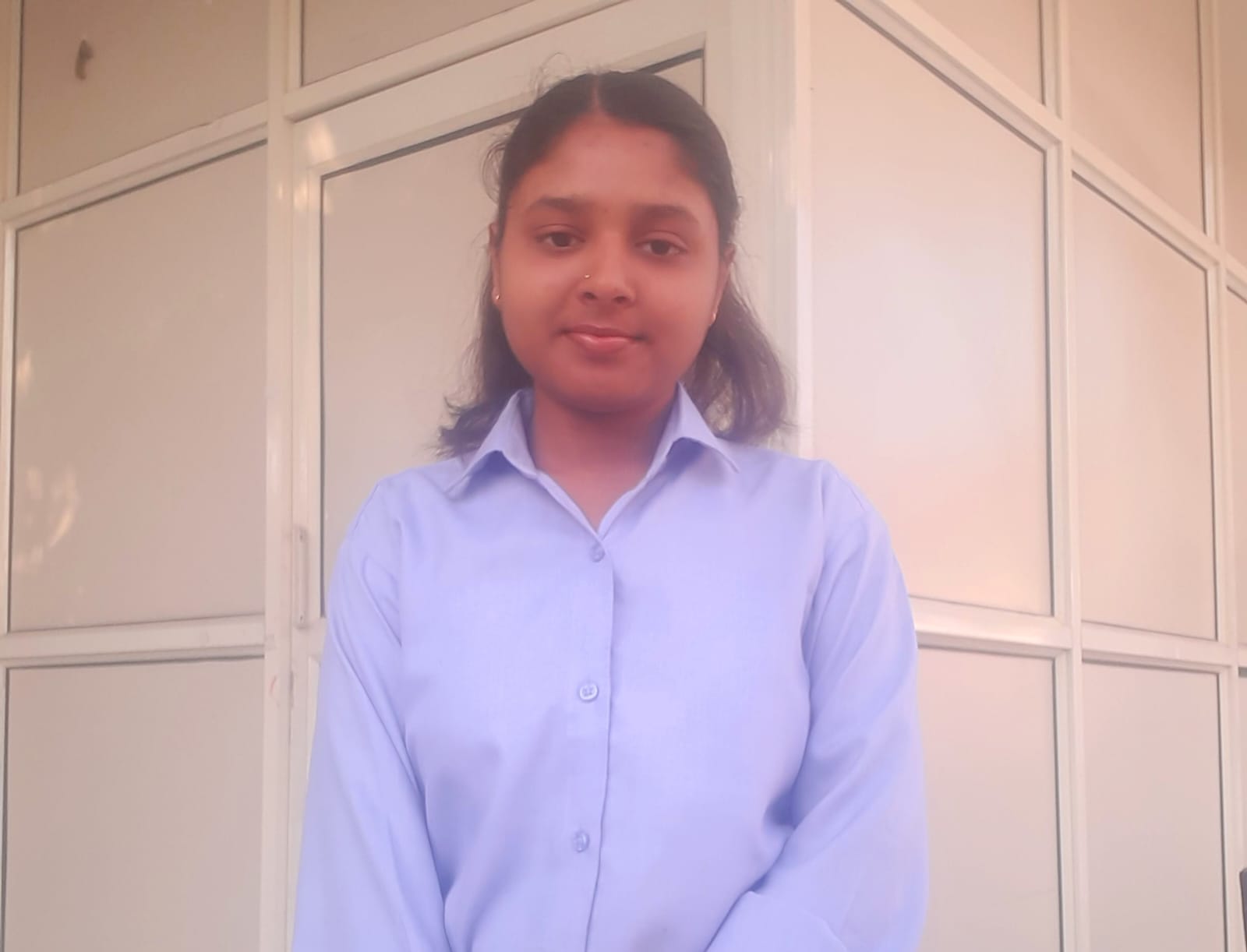 Roshni Kumari
Roshni Kumari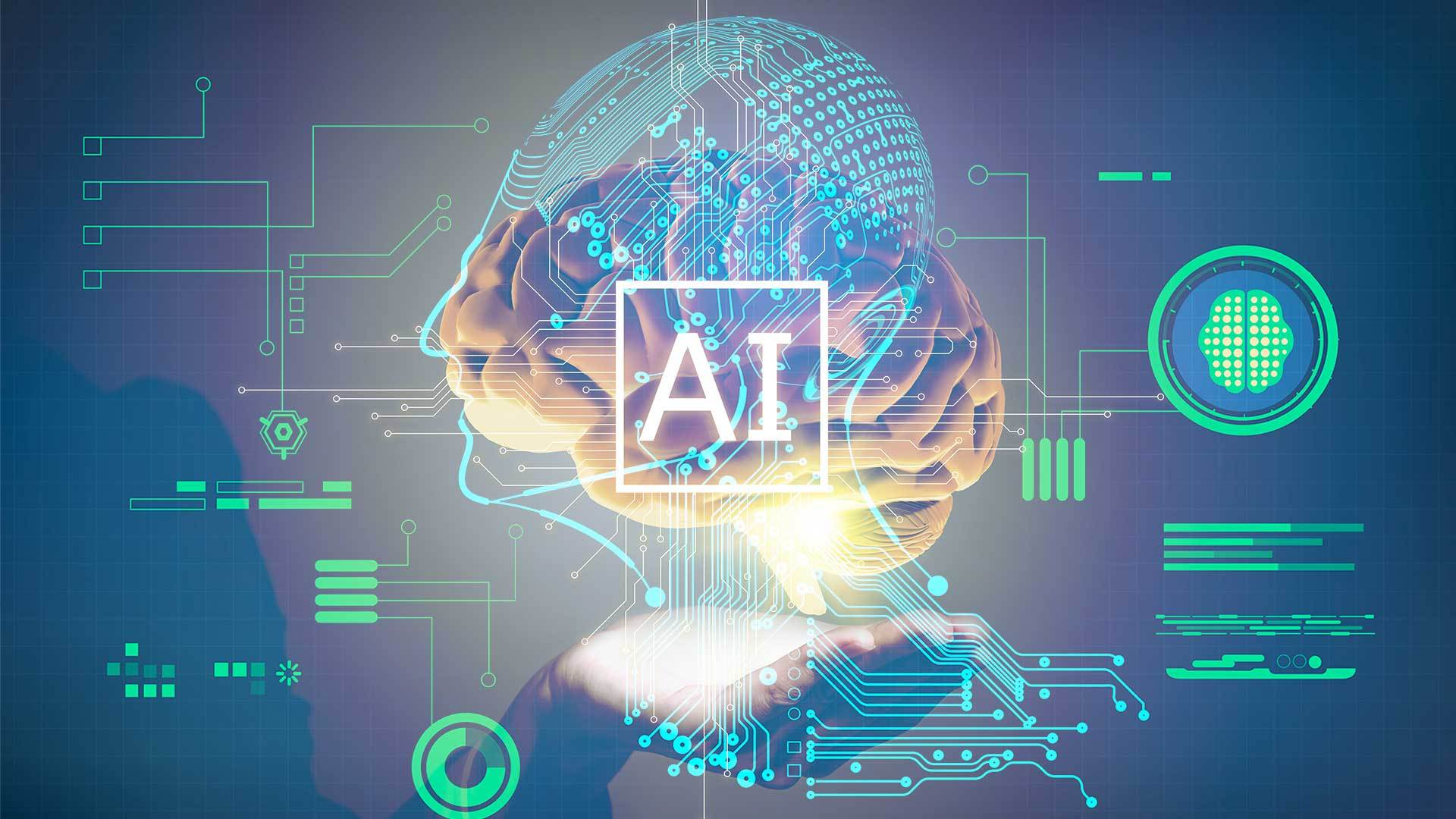
“From curiosity to creation, the AWS AI/ML journey turned my passion into innovation, empowering me to solve tomorrow's challenges today.“
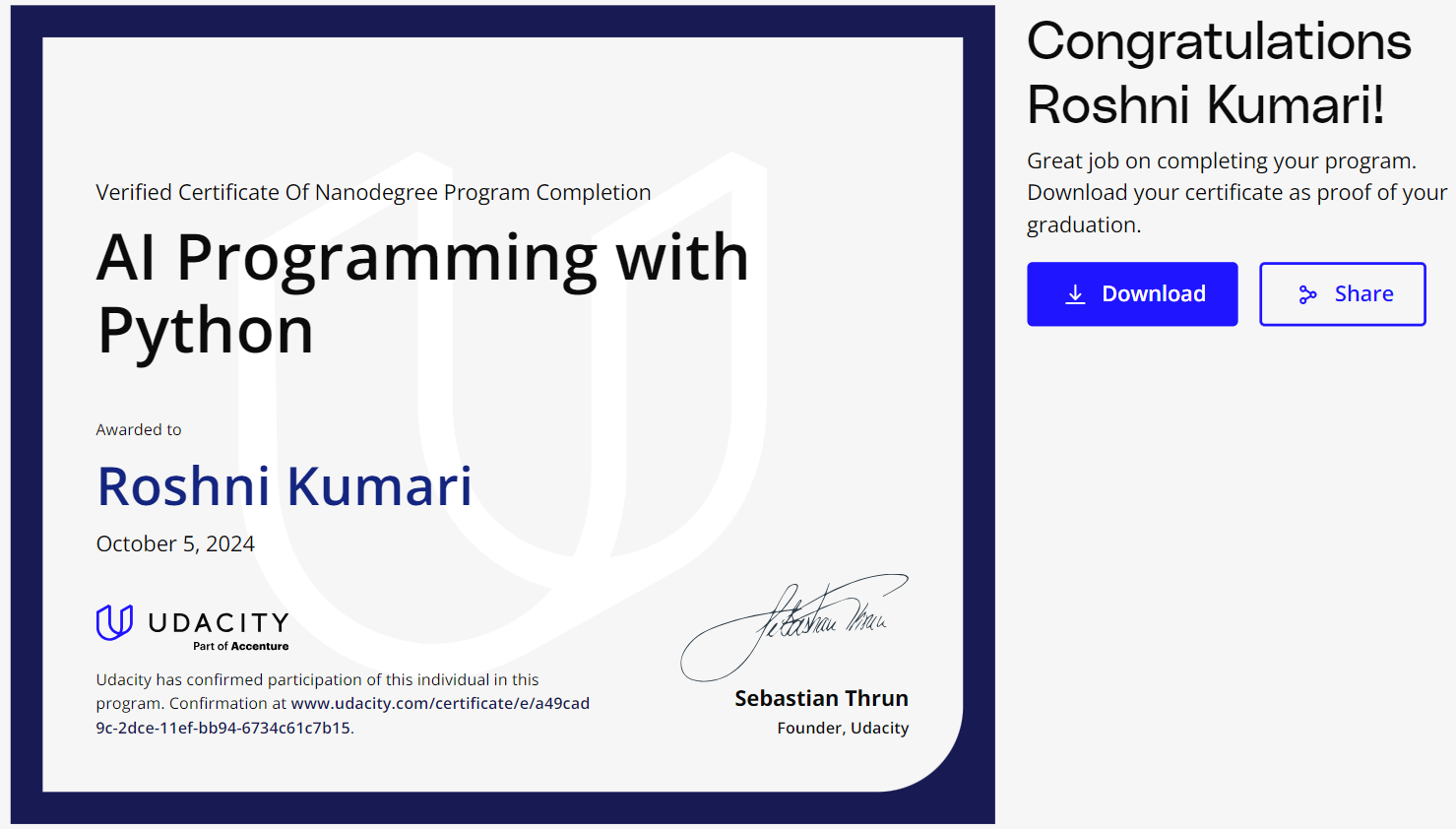
It all started with curiosity. As an AWS AI/ML Scholar, I embarked on a journey that would not only test my technical abilities but also challenge my problem-solving skills in ways I hadn't imagined. The AWS AI/ML NanoDegree program was my gateway to exploring the powerful world of artificial intelligence and machine learning.
The Beginning of a Transformative Journey
It all started when I came across the AWS AI & ML Scholarship Program. With over 15,000 global participants, the sheer scale and prestige of this opportunity excited me. I immediately knew this was more than just a learning initiative—it was a community of ambitious learners, professionals, and scholars driven by the desire to revolutionize the world of AI and ML.
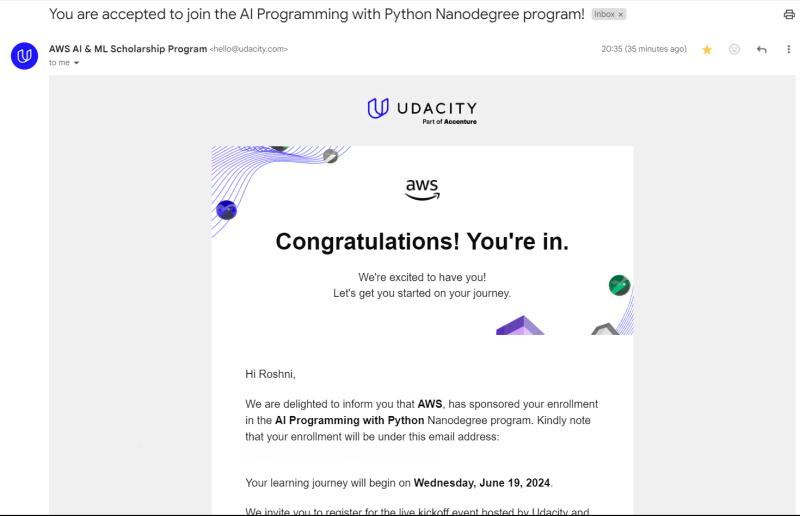
During Phase 1, we were introduced to the Udacity Nano Degree Program in AI Programming with Python, a comprehensive course designed to challenge and equip us with core skills in AI and machine learning. Diving deep into Supervised Machine Learning, Python, and Mathematics, I found myself constantly in awe of the limitless possibilities that these technologies offer.
The intensive curriculum pushed me to experiment, learn, and even make mistakes—because with every error came a deeper understanding of AI. One of my proudest moments during Phase 1 was working on projects like the PyTorch Deep Learning Classifier. These projects were more than academic exercises; they allowed me to harness my creativity while using advanced machine learning models to solve real-world problems.
Pushing Boundaries: From Learning to Mastery
Completing the First Phase was no small feat. It required hours of dedication, learning new tools, and navigating through complex algorithms. But my enthusiasm for AI kept me motivated. I found immense value in every examination and project, particularly in areas like machine learning classification and deep learning models using PyTorch. My commitment to mastering these topics eventually helped me succeed in Phase 1, paving the way for what would come next.
The day I received the announcement that I had made it to the Top 500 Global Scholars for Phase 2 remains etched in my mind. Out of the 2000 selected globally for the first phase, this recognition validated the hard work I had invested throughout my journey. It was a humbling moment—one that underscored the importance of perseverance and continuous learning.
The Road Ahead: Phase 2
With Phase 2 now in sight, I am both excited and determined. This next chapter involves the Udacity Machine Learning Fundamentals Nanodegree program, which promises to delve even deeper into core machine learning principles. I know this phase will demand more effort, but I am ready to face every challenge head-on.
I owe much of this success to Amazon Web Services (AWS) and their unwavering support throughout the process. AWS has not only sponsored my participation but also fostered an environment where learning is encouraged and supported at every step. A heartfelt thanks to the AWS AI & ML Scholarship team and the Udacity team for their guidance and dedication to nurturing learners like myself.
This experience was not just about learning new skills; it was a blend of challenge, excitement, growth, and community. I’ve gained a wealth of knowledge, developed real-world projects, and had the privilege of networking with some truly inspiring individuals. Let me walk you through this rewarding journey, from the basics of Python to building an advanced image classifier.
Starting the Journey: Introduction to AI Programming with Python
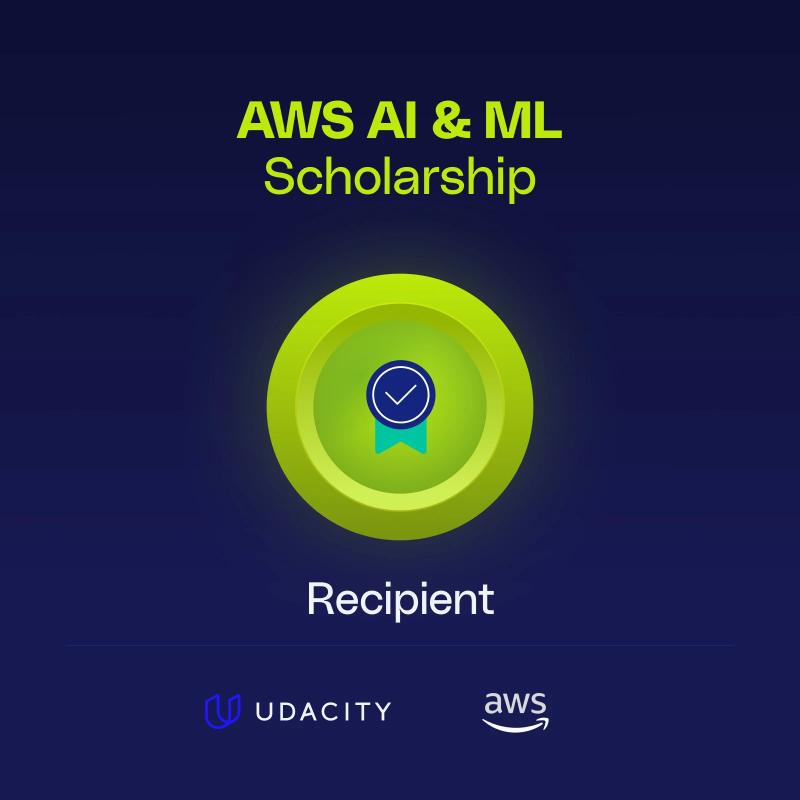
At the heart of the AWS AI/ML Nanodegree program is Python programming, which laid the foundation for all subsequent lessons. We began with an in-depth exploration of Python, learning why it's such a popular choice for AI development. The early lessons covered essential Python concepts such as:
Data Types and Operators: Understanding how to handle various data types in Python.
Control Flow and Functions: Learning to control the flow of a program and implement functions for modular coding.
Numpy, Pandas, and Matplotlib: Key libraries that simplify handling large datasets and visualizing data.
We also delved into using Anaconda and Jupyter Notebooks, two incredibly useful tools for managing environments and experimenting with code.
Diving Into Linear Algebra and Neural Networks
One of the most fascinating parts of the program was understanding the mathematical foundations of AI, especially Linear Algebra. From vectors to matrices, we learned how these principles power neural networks. Concepts such as Linear Transformation and Linear Combination were essential for grasping the mechanics behind neural networks, which we explored in detail.
In the Neural Networks lessons, I learned how to implement and train neural networks, including using gradient descent to optimize model performance. This deepened my understanding of how neural networks learn from data and improve over time.
My First Milestone: Identifying Dog Breeds Using a Pre-trained Image Classifier 🐕✨
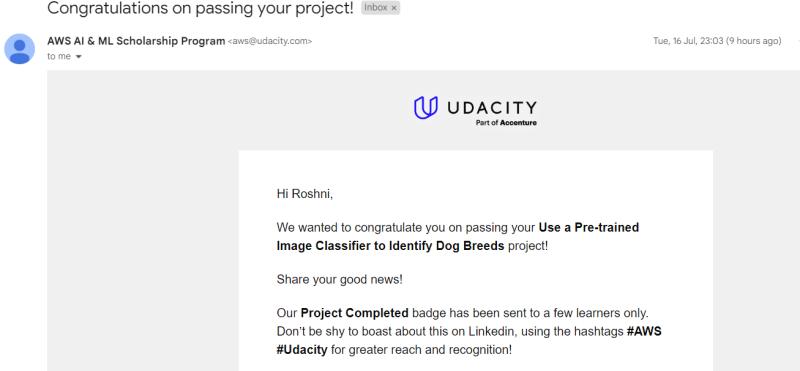
"The journey of a thousand miles begins with one step." — Lao Tzu
As I continue down the path of AI and machine learning, every step has its own challenges and triumphs. One of the most rewarding milestones in this journey has been completing my first project as part of the Udacity AI & ML Scholarship Program. The project—"Using a Pre-trained Image Classifier to Identify Dog Breeds"—was a thrilling dive into real-world machine learning applications. It was an experience that pushed my skills to the limit, while also reaffirming my love for this field.
The Challenge: Building a Dog Breed Classifier
The project tasked me with developing a model that could classify images of dogs into their respective breeds using a pre-trained image classifier. Sounds simple, right? Well, not quite. As I embarked on this project, I quickly realized it required an in-depth understanding of image classification, model architecture, and command-line interface programming. The tools were new, the challenges were real, and at times, the path forward felt uncertain.
Initially, the project seemed overwhelming. There were so many moving parts: setting up the model architecture, implementing time functions to measure performance, and enabling dynamic inputs like directory and dogfile arguments. But rather than feeling discouraged, I viewed each hurdle as an opportunity to learn.
Hitting Roadblocks—and Breaking Through
There was one particular night when I hit a roadblock that felt insurmountable. No matter what I tried, I couldn’t pinpoint the exact issue in my project. It was frustrating, and I questioned whether I’d be able to complete it in time.
However, in moments of difficulty, the Udacity community truly shines. Thanks to the supportive network of mentors and fellow learners, I was able to overcome this challenge. I cannot thank Abdelrahman Eid and Abhishek Mann Sir enough for their patient guidance. Their expertise and encouragement gave me the clarity I needed to push through the difficulties and successfully debug my code.
With their help, I managed to refine my approach and implement solutions that took the project to the next level.
Key Learnings from the Dog Breed Classifier Project
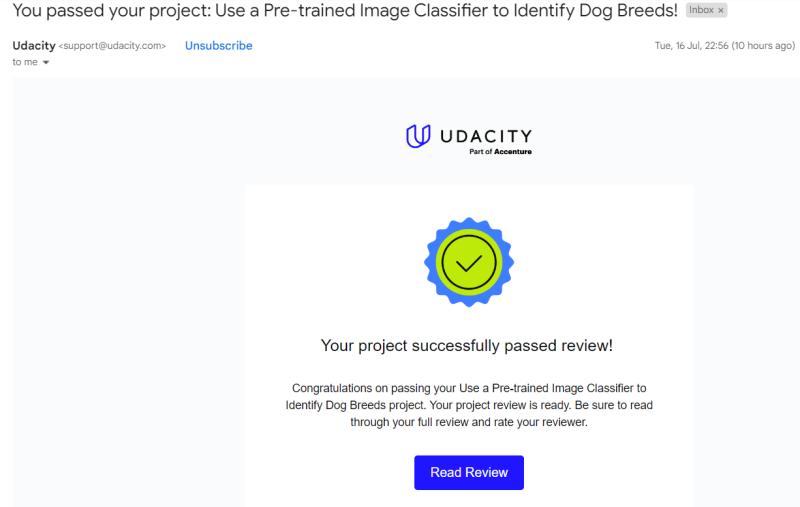
This project turned out to be a masterclass in practical AI and machine learning skills. Here are some of the key takeaways from this experience:
Implementing Time Functions: I learned how to effectively measure the performance of my code, which allowed me to optimize execution time—an essential skill for large-scale AI applications.
Command Line Flexibility: I enabled the program to accept various command-line arguments, including a directory argument for more flexibility and a dogfile argument to dynamically input dog breed data. These skills taught me how to make my code adaptable for various use cases.
Model Architecture Flexibility: By incorporating an architecture argument, I could seamlessly integrate different pre-trained models, such as ResNet, AlexNet, and VGG. This adaptability opened doors to experiment with various model architectures and fine-tune their performance.
Data Handling and Output Verification: Ensuring that the dictionary returned by my function was in the correct format, while verifying and storing results accurately, was critical to maintaining data integrity. I also learned to correctly display and interpret the results, whether the images matched the classifier labels.
Matching Classifier and Pet Image Labels: The project was also a great exercise in label classification—accurately determining whether both classifier and pet image labels corresponded to dog breeds, or whether they needed to be classified as not dogs.
Through this hands-on experience, I honed skills that would be essential for my future work. From timing code execution to handling command-line arguments and improving image classification techniques, this project equipped me with practical, industry-relevant expertise.
The Power of Community and Collaboration
Another highlight of this journey was being part of the Udacity community. Weekly sessions hosted by tutors like Sabirah Oniyangi and Oluwatosin Akinsete were invaluable. These gatherings provided a platform to interact with peers, troubleshoot problems, and exchange ideas. It was in these moments of collaboration that I realized the true power of a supportive learning environment. Having access to this community not only enhanced my learning but also made the journey far more enjoyable.
The feeling of successfully completing the project was one of immense satisfaction. It wasn’t just about writing code or getting the classifier to work—it was about solving real problems, collaborating with others, and constantly pushing myself to improve.
🔗 Project Overview: Using a Pre-trained Image Classifier to Identify Dog Breeds
What’s Next? Moving Forward in My AI & ML Journey
With this first project complete, I now look forward to the second major project of this scholarship program. Each step brings me closer to my goal of mastering artificial intelligence and machine learning. This journey has already taught me so much, but I know there’s still more to learn.
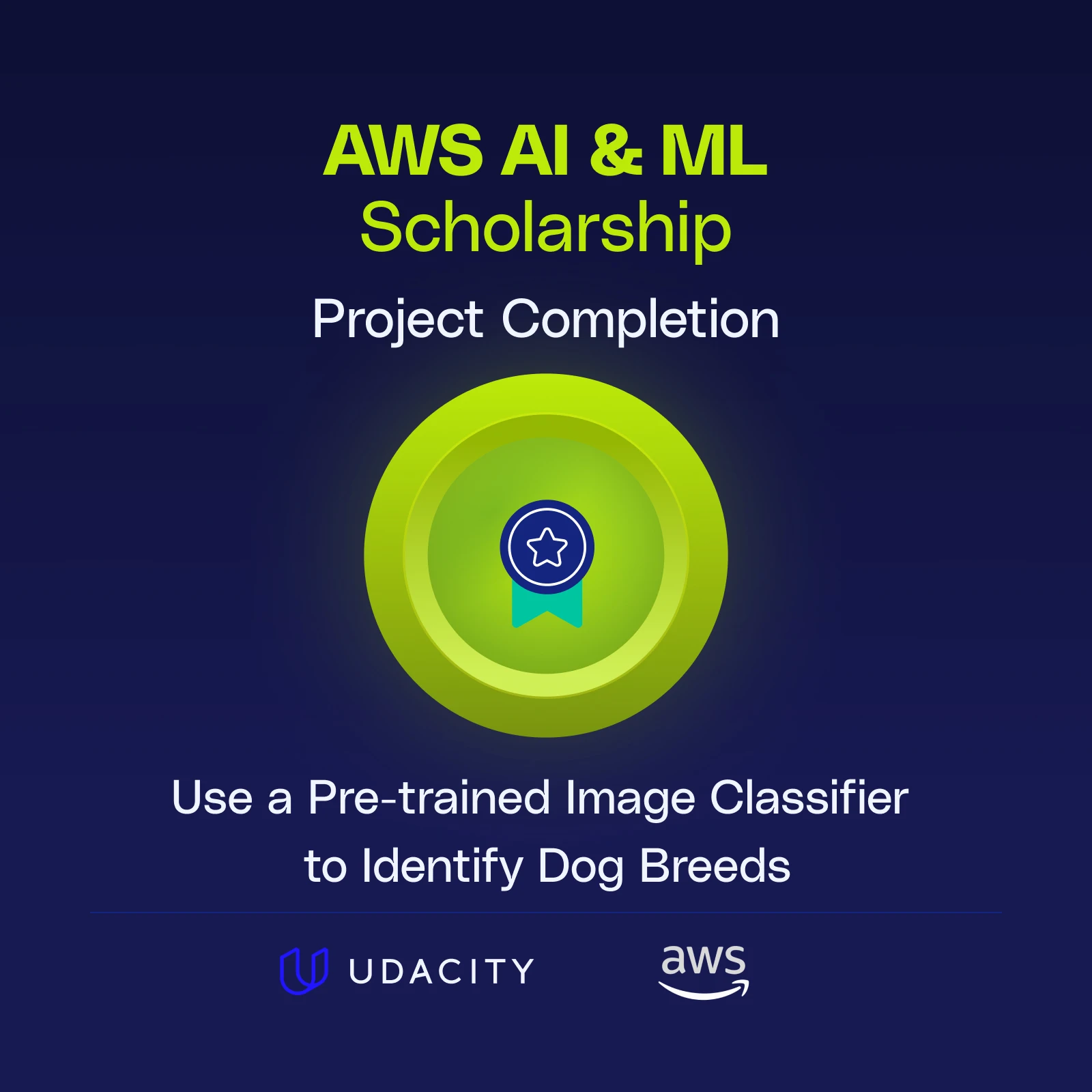
The best part? I’m not doing it alone. With the continued support of the AWS AI & ML Scholarship program, Udacity, and the incredible community of learners and mentors, I’m confident that the next challenge will be just as rewarding.
And just like with this project, when the going gets tough, I’ll remind myself: the greatest rewards come from overcoming the biggest challenges.
Second Milestone: 𝑪𝒓𝒆𝒂𝒕𝒆 𝒀𝒐𝒖𝒓 𝑶𝒘𝒏 𝑰𝒎𝒂𝒈𝒆 𝑪𝒍𝒂𝒔𝒔𝒊𝒇𝒊𝒆𝒓🌸🔍
After the rewarding experience of developing a custom image classifier for flower recognition, I was eager to dive into my next challenge—a customized object detection system that leverages the power of PyTorch and Torchvision to identify and locate various objects within images. This project was not just a technical endeavor; it was a significant leap forward in my understanding of machine learning concepts and their practical applications.
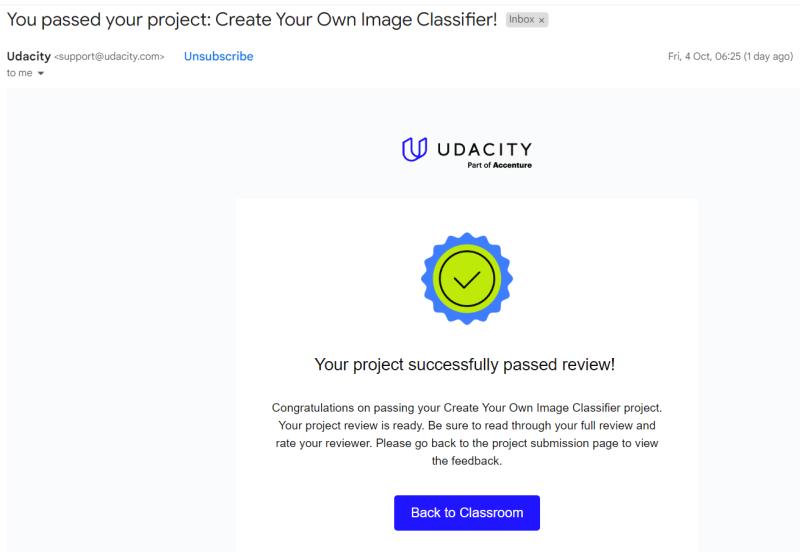
About the Project: Customized Neural Network for Object Detection ✨
This project was an immersive hands-on challenge that centered around building and training a customized neural network using PyTorch and Torchvision. My aim was to leverage advanced machine learning techniques to create an effective object detection system, capable of identifying and localizing various objects within images.
Overview of the Implementation:
Model Selection and Customization: I opted to utilize a pre-trained VGG16 model, which is renowned for its deep architecture and robust feature extraction capabilities. To tailor the model to my specific application, I constructed a new feedforward classifier on top of the base model while freezing the parameters of the original layers. This approach allowed me to retain the learned features from the VGG16 model while efficiently adapting it to recognize the specific objects in my dataset.
Data Preparation: The success of any machine learning model hinges on the quality of its training data. I meticulously gathered a diverse dataset that encompassed a wide array of objects, ensuring comprehensive coverage for effective training. To enhance the dataset further, I employed various data augmentation techniques, such as random scaling, flipping, and rotation. This process not only increased the volume of training data but also improved the model’s ability to generalize by introducing variability.
Data Normalization and Efficient Loading: To streamline the training process, I normalized the dataset and loaded it efficiently using Torchvision’s data transformations and DataLoader utilities. Normalization ensured that the model could converge more quickly during training by maintaining consistent input data distributions. The use of DataLoader facilitated efficient batch processing, enabling smooth and fast loading of data during model training.
Training and Evaluation: The model was subjected to a rigorous training process, where I meticulously monitored its performance through various evaluation metrics, including Mean Average Precision (mAP). By iteratively fine-tuning hyperparameters and employing techniques such as early stopping and cross-validation, I achieved solid accuracy on the test dataset. The final model was saved as a checkpoint for future use, providing a reliable resource for subsequent applications.
Development of a Command-Line Interface: To enhance user interaction and accessibility, I developed a command-line application that enables users to train their own models, set hyperparameters, and perform class predictions with GPU support. This feature significantly lowers the barrier to entry for users who wish to leverage the capabilities of the object detection model without deep technical knowledge. The interface is user-friendly and designed to cater to both novice and experienced practitioners in the field.
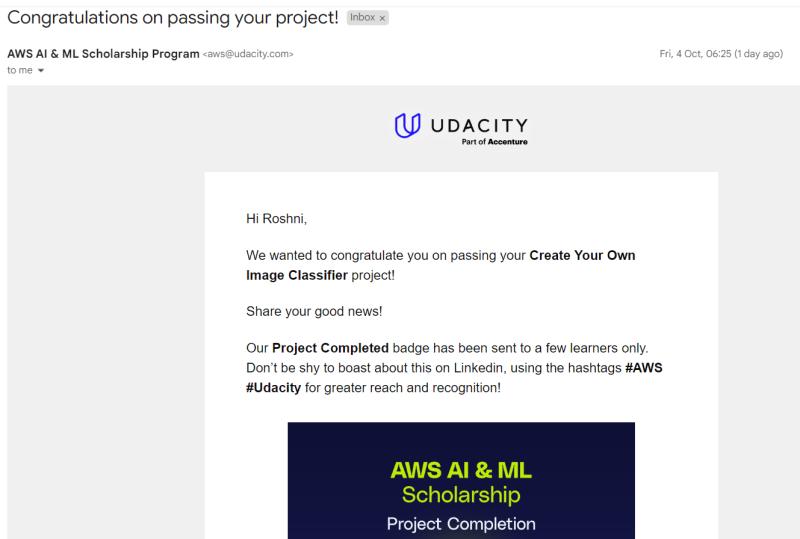
Key Learnings from Create Your Own Image Classifier
※ 𝐼 𝑢𝑠𝑒𝑑 𝑎 𝒑𝒓𝒆𝒕𝒓𝒂𝒊𝒏𝒆𝒅 𝑽𝑮𝑮16 𝒎𝒐𝒅𝒆𝒍 𝑎𝑛𝑑 𝑏𝑢𝑖𝑙𝑡 𝑎 𝑛𝑒𝑤 𝑓𝑒𝑒𝑑𝑓𝑜𝑟𝑤𝑎𝑟𝑑 𝑐𝑙𝑎𝑠𝑠𝑖𝑓𝑖𝑒𝑟 𝑜𝑛 𝑡𝑜𝑝, 𝑓𝑟𝑒𝑒𝑧𝑖𝑛𝑔 𝑡ℎ𝑒 𝑏𝑎𝑠𝑒 𝑚𝑜𝑑𝑒𝑙’𝑠 𝑝𝑎𝑟𝑎𝑚𝑒𝑡𝑒𝑟𝑠.
※ 𝐷𝑎𝑡𝑎 𝑤𝑎𝑠 𝒂𝒖𝒈𝒎𝒆𝒏𝒕𝒆𝒅, 𝒏𝒐𝒓𝒎𝒂𝒍𝒊𝒛𝒆𝒅, 𝒂𝒏𝒅 𝒍𝒐𝒂𝒅𝒆𝒅 𝒆𝒇𝒇𝒊𝒄𝒊𝒆𝒏𝒕𝒍𝒚 𝑢𝑠𝑖𝑛𝑔 𝒕𝒐𝒓𝒄𝒉𝒗𝒊𝒔𝒊𝒐𝒏'𝒔 𝒕𝒓𝒂𝒏𝒔𝒇𝒐𝒓𝒎𝒔 𝒂𝒏𝒅 𝑫𝒂𝒕𝒂𝑳𝒐𝒂𝒅𝒆𝒓.
※ 𝑇ℎ𝑒 𝑚𝑜𝑑𝑒𝑙 𝑤𝑎𝑠 𝒕𝒓𝒂𝒊𝒏𝒆𝒅 𝒂𝒏𝒅 𝒆𝒗𝒂𝒍𝒖𝒂𝒕𝒆𝒅, 𝑎𝑐ℎ𝑖𝑒𝑣𝑖𝑛𝑔 𝑠𝑜𝑙𝑖𝑑 𝑎𝑐𝑐𝑢𝑟𝑎𝑐𝑦 𝑜𝑛 𝑡ℎ𝑒 𝑡𝑒𝑠𝑡 𝑑𝑎𝑡𝑎 𝑎𝑛𝑑 𝑡ℎ𝑒𝑛 𝑠𝑎𝑣𝑒𝑑 𝑎𝑠 𝑎 𝑐ℎ𝑒𝑐𝑘𝑝𝑜𝑖𝑛𝑡 𝑓𝑜𝑟 𝑓𝑢𝑡𝑢𝑟𝑒 𝑢𝑠𝑒.
※ 𝐼 𝑎𝑙𝑠𝑜 𝑑𝑒𝑣𝑒𝑙𝑜𝑝𝑒𝑑 𝑎 𝑐𝑜𝑚𝑚𝑎𝑛𝑑-𝑙𝑖𝑛𝑒 𝑎𝑝𝑝𝑙𝑖𝑐𝑎𝑡𝑖𝑜𝑛 𝑡ℎ𝑎𝑡 𝑎𝑙𝑙𝑜𝑤𝑠 𝑢𝑠𝑒𝑟𝑠 𝑡𝑜 𝒕𝒓𝒂𝒊𝒏 𝒎𝒐𝒅𝒆𝒍𝒔, 𝒔𝒆𝒕 𝒉𝒚𝒑𝒆𝒓𝒑𝒂𝒓𝒂𝒎𝒆𝒕𝒆𝒓𝒔 𝑎𝑛𝑑 𝒑𝒆𝒓𝒇𝒐𝒓𝒎 𝒄𝒍𝒂𝒔𝒔 𝒑𝒓𝒆𝒅𝒊𝒄𝒕𝒊𝒐𝒏𝒔 𝒘𝒊𝒕𝒉 𝑮𝑷𝑼 𝑠𝑢𝑝𝑝𝑜𝑟𝑡.
📈 The Training Phase: As I began training the model, I meticulously monitored its performance using various metrics, including Mean Average Precision (mAP). Each epoch was filled with anticipation and learning; some iterations would yield minor improvements, while others showcased significant leaps in accuracy. This phase was a rollercoaster of emotions—each success fueled my passion, while challenges pushed me to innovate and refine my approach.
🌐 Bringing the Project to Life: Once I was satisfied with the model's performance, I focused on making it user-friendly. I developed a simple web interface that allowed users to upload images and receive instant feedback on detected objects. This aspect of the project was particularly rewarding, as it transformed my technical work into a tangible, interactive experience for users. Witnessing their amazement as the system accurately identified objects was incredibly fulfilling!
🔗 Project Link: Check it out here!
🔗 Verify Here: Project Verification
Reflecting on this journey, I’m reminded of the importance of perseverance, curiosity, and collaboration. I am immensely grateful for the guidance from Abhishek Mann and Abdelrahman Eid Sir, whose insights helped me navigate the complexities of the project. A special shoutout to the Udacity & AWS community for their unwavering support! Your encouragement has been a constant source of motivation.
As I continue to explore the endless possibilities of AI, I look forward to sharing more projects and learning experiences. This is just the beginning, and I am excited to embrace the challenges and opportunities that lie ahead! Together, let's keep pushing the boundaries of innovation and learning. 🚀💪
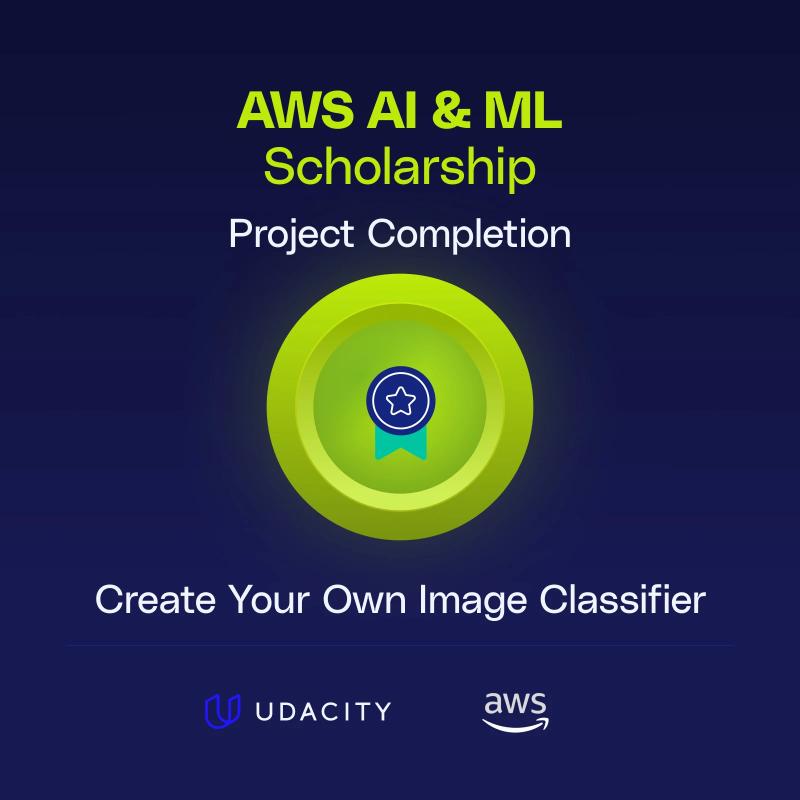
Looking Forward: Contributing to the Future of AI & ML
The world of AI and ML is evolving rapidly, and I feel privileged to be part of this journey. With this scholarship, I now have the tools and resources to contribute meaningfully to this domain. As I continue my studies and prepare for the challenges that Phase 2 will bring, my primary focus remains on innovation and impact. AI is not just about technology—it's about how we can harness this technology to make the world a better place.
I am incredibly excited to deepen my knowledge and continue exploring new ways to apply AI in innovative projects. The challenges ahead may be daunting, but they also present an opportunity to grow, collaborate, and contribute to the next wave of technological advancements. This scholarship has reaffirmed my belief that with the right mindset, dedication, and support, there are no limits to what can be achieved.
I am grateful to all the people who have been a part of this journey—mentors, peers, and the vibrant community of scholars. This accomplishment is not just mine; it's a testament to the collective effort of everyone who believed in me and supported me along the way.
The road ahead is long, but I am ready to take on this next phase with the same enthusiasm and determination that brought me here. Here's to the future—one filled with learning, discovery, and boundless possibilities!
“This journey reflects the broader adventure we undertake when we pursue new knowledge and skills. Each step forward, no matter how small, is a significant victory in our quest for growth. And as I continue on this path, I am eager to see where the next steps in AI and ML will take me.“
Appreciation from the Community♥️
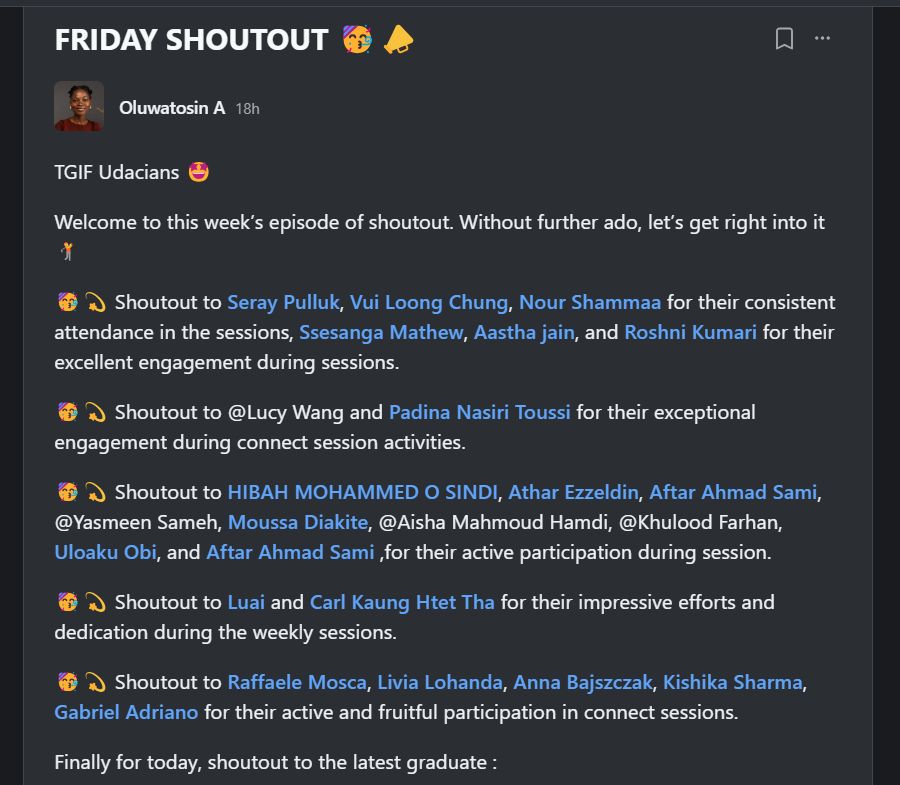
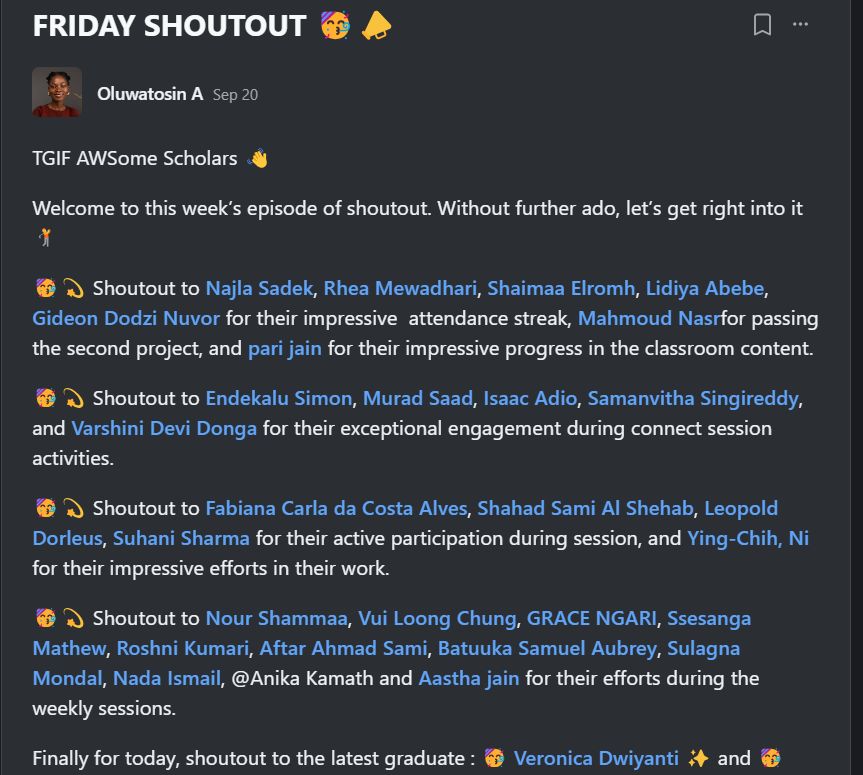
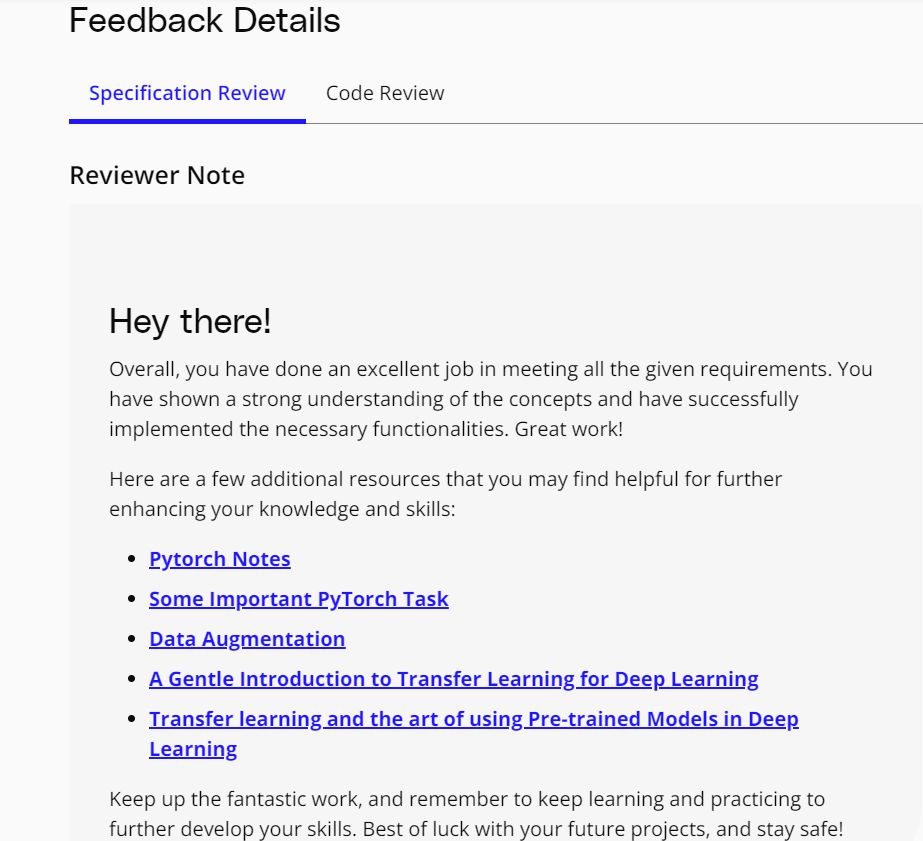
Heartful thanks to the whole Udacity Community✨
Learning Resources :)
Apply For AWS AI/ML Scholarship: https://aws.amazon.com/machine-learning/scholarship/
Explore all Projects: https://github.com/RSN601KRI
Why to Join this program: https://docs.aws.amazon.com/deepracer/latest/student-userguide/what-is-scholarship.html
Explore all Programs: https://www.udacity.com/
Social Profiles ;
LinkedIn: https://www.linkdin.com/in/roshnikumari1
GitHub: https://github.com/RSN601KRI
Twitter : https://twitter.com/RoshniK29147303
Linktree: https://linktr.ee/roshniikri
Medium: https://medium.com/@roshni_k06
Leetcode: https://leetcode.com/roshni_449/
Portfolio: Roshni Kumari
Youtube: Check Out Once!
Free Courses & Certifications: https://glass-porcupine-1ee.notion.site/AWS-Free-Courses-Certifications-1293fc2aa77a809fb565f9300b11b9ac
Keep Learning | Keep Hustling !♥️🚀
Subscribe to my newsletter
Read articles from Roshni Kumari directly inside your inbox. Subscribe to the newsletter, and don't miss out.
Written by

Roshni Kumari
Roshni Kumari
β MLSA | MUN Secretariat @GU | GOSC'24 | SIH PreQualifier | GDSC GU | Google Certified | Postman Student Expert | Open Source Contributor